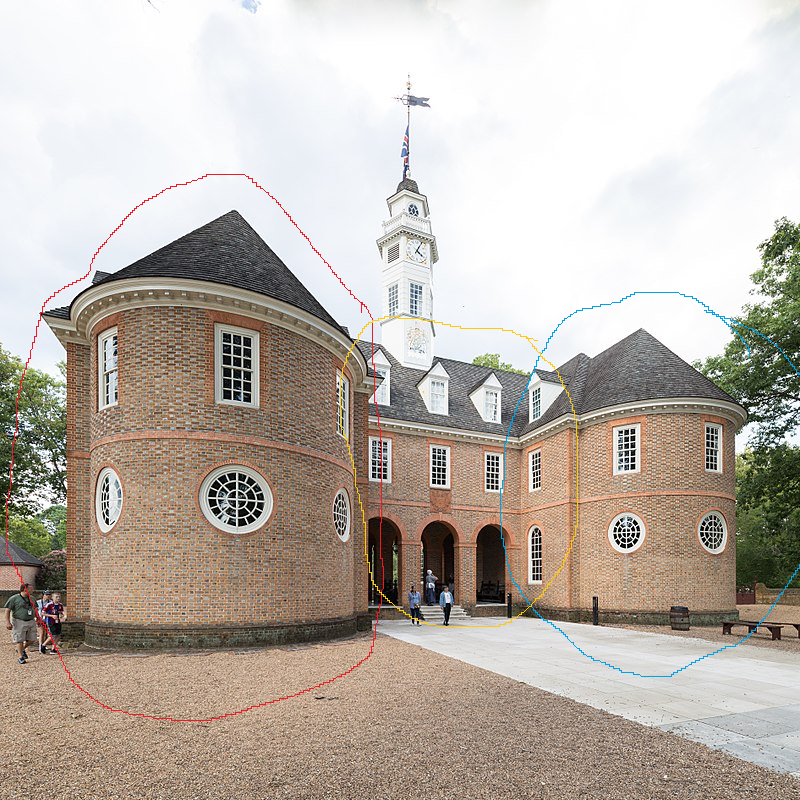Colonial cities were either created around a harbor town or a seat of government. In every city there was a church, where, obviously, the people would go for church services. There was always some form of government building in a city, regardless of whether it was a harbor or not. There was at least one town square, or gathering place. Like most city streets today, the streets were laid out in grids. There was a market, where people would sell their wares. Of course there were houses where the people live. There would also be trade shops, where people with a certain occupation would perform their trade and make their goods. Here are the occupations:
- Barber: The barber would cut hair. Oddly, he also would provide leeches if the colonists had a disease. They believed the leech would cure it.
- Blacksmith: The blacksmith makes items from metal, like horseshoes and tools. The blacksmith would also knock out your aching tooth if you had one.
- Cabinetmaker: The cabinetmaker did not just make cabinets; he was basically the carpenter. He also made the cases for clocks that the clockmaker made.
- Clockmaker: The clockmaker builds and repairs clocks. He gets the cases for the clocks from the cabinetmaker
- Cobbler: Cobblers make shoes. Shoes in the colonial times were always custom fit.
- Cooper: The cooper makes barrels to store food in for long periods of time.
- Doctor: The doctor deals with illnesses and health. He is also the pharmacist.
- Farmer: The farmer grows cash crops and food for the colony and his family.
- Grocer: The grocer sells food.
- Hatter: The hatter makes and sells hats.
- Miller: The miller mills wheat into flour for the farmer.
- Sailor: The sailor sails boats.
- Silversmith: The silversmith makes articles out of silver.
- Tailor: The tailor makes clothes for the rich.
- Tanner: The tanner makes things out of leather
- Wigmaker: The wigmaker makes wigs.
The colonial government consisted of the council and house of burgesses. The governor would be appointed by the King of England. The council was a group of people chosen by governor to aid him in decisions. The house of burgesses was chosen by the people in an election. Below is a picture of the Williamsburg colonial government building.

The area circled in red is where the council would meet. The area circled in blue is where the house of burgesses would meet. The yellow is where they would meet together.
The first houses built by the colonists were, naturally, built of wood. There was only one room in the house that everything was done in. A couple of houses had an attic for storage.
The colonial diet consisted of several different types of food. They would eat corn and corn bread. They would also eat squash. Sometimes, they ate fruits with their other meals. Bean porridge was a common meal among the colonies. Vegetables were also common food because it could be grown easily. The men and boys would fish and hunt and bring home the meats for entrees. Bread was also commonly made from the flour that the miller milled for the farmer. As to drinks, cider, milk, beer, and water were the common beverages. Even children would drink beer, and it was not frowned upon at all.
We also had a study of children in the colony. Some of the chores they had to do included cleaning the house, taking care of pets, washing dishes (worst chore ever, especially without the invention of the dishwasher), fetching water, shaking out the mattress, helping their dad with his work, and doing laundry (again, a pain without washing machines).
They also went to school. The first school they went to was called dame school because one of the women of the colony volunteered to teach it. They would learn to read from this woman. After passing dame school they would go on to another school to learn arithmetic, rhetoric, and writing. After that, boys could go on to be apprentices and learn a trade. Girls would generally work with their mother on her tasks until they married.
The other part of my assignment was to list my favorite and least favorite parts of the culture we covered. I am really quite indifferent, but I guess I can pick a favorite and least favorite part. My favorite part was learning about the occupations. I found it interesting to learn what everybody did for their trades. My least favorite part was the portion about children in the colonies. I just found it the least interesting.